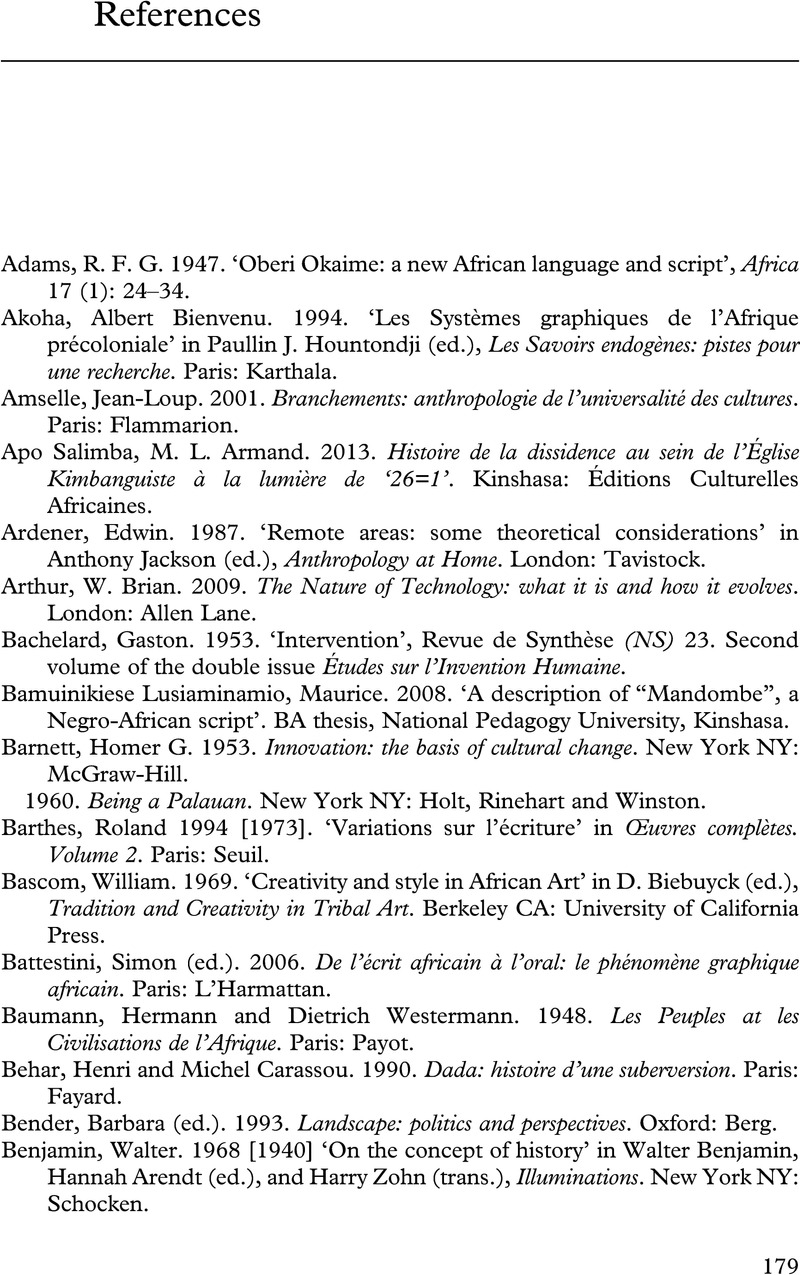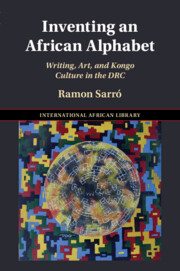Book contents
- Inventing an African Alphabet
- The International African Library
- Inventing an African Alphabet
- Copyright page
- Dedication
- Epigraph
- Contents
- Figures
- Maps
- Glyphs
- Acknowledgements
- Part I Introduction
- Part II Biography
- Part III Writing, Art, and Kongo Culture
- Part IV Discussion
- References
- Index
- Titles in the Series
- References
References
Published online by Cambridge University Press: 17 February 2023
- Inventing an African Alphabet
- The International African Library
- Inventing an African Alphabet
- Copyright page
- Dedication
- Epigraph
- Contents
- Figures
- Maps
- Glyphs
- Acknowledgements
- Part I Introduction
- Part II Biography
- Part III Writing, Art, and Kongo Culture
- Part IV Discussion
- References
- Index
- Titles in the Series
- References
Summary

- Type
- Chapter
- Information
- Inventing an African AlphabetWriting, Art, and Kongo Culture in the DRC, pp. 179 - 190Publisher: Cambridge University PressPrint publication year: 2023



